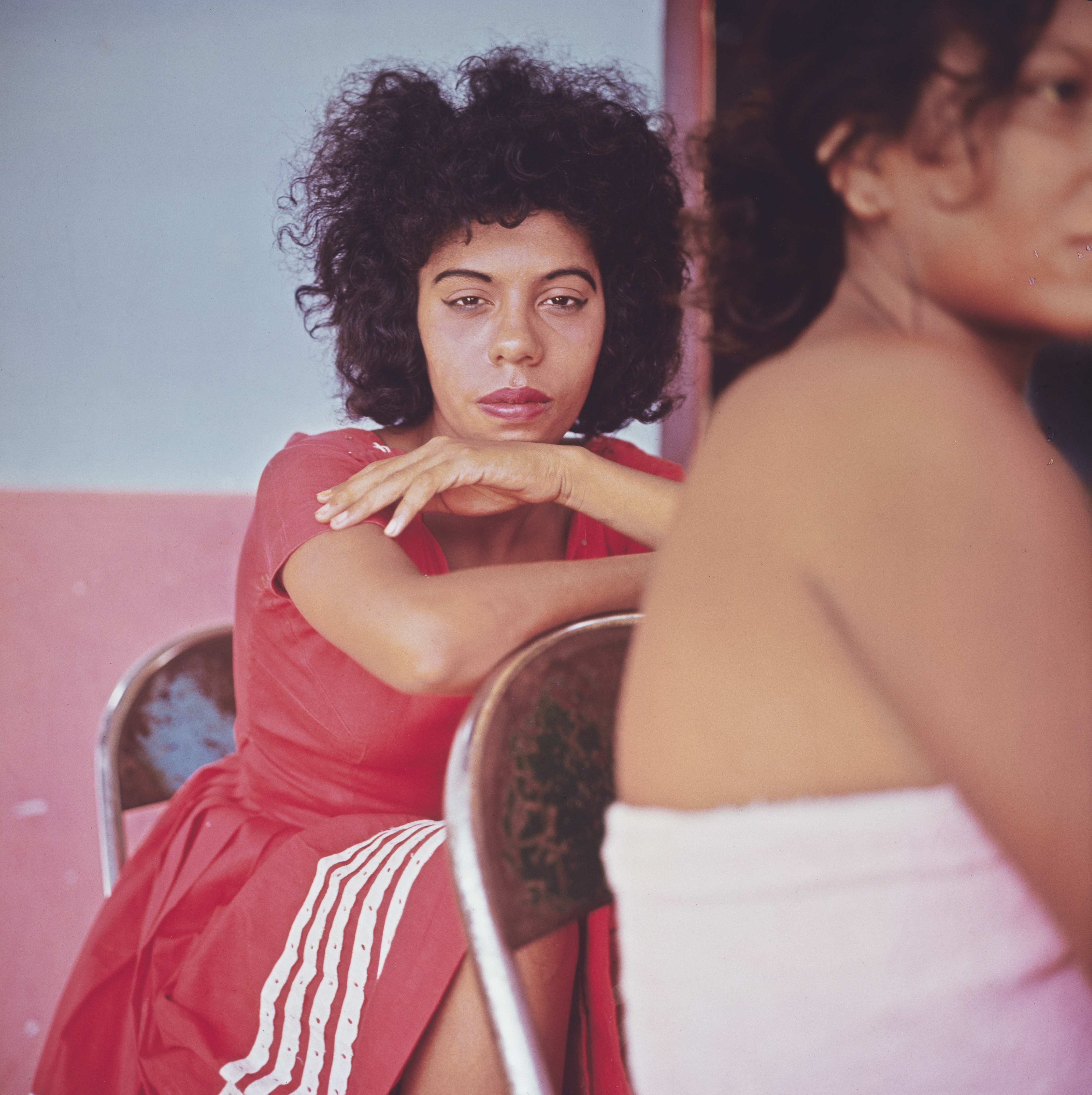
Everybody needs a soundtrack for the dog days, and the same could be said for inspiring summertime images. This season, visitors to New York museums are in luck: No less than four excellent exhibitions of photography are scheduled at as many major art institutions throughout the city.
Nan Goldin’s just-opened show at the Museum of Modern Art was followed this week by a recent group show of “post-internet” images at Manhattan’s newest museum, the International Center of Photography on the Bowery. A much-anticipated survey of the work of Diane Arbus has been scheduled for mid-July at the Met Breuer uptown. And finally, the Whitney Museum of American Art is hosting a large-scale show of prints and films by socially minded shutterbug Danny Lyon. Of the four exhibitions, Lyon’s show offers both the summer’s most straightforward images and, paradoxically, the biggest surprises.
The first comprehensive career retrospective in 25 years for the Queens, New York native, Danny Lyon: A Message to the Future was organized by San Francisco’s Fine Arts Museums, but premieres first at the Whitney. The show consists of some 175 photographs, three films, eight photomontages, a large bulletin board covered in art postcards and clippings, and a pack rat’s hoard of studio ephemera. At times, the museum’s temporary walls are so crowded with prints the place resembles a 1950s photo lab. Taken as individual experiences, though, the show’s snapshots prove fresher than toothpaste—of the variety that emboldens an in-your-face documentarian like Lyon.
Courtesy of Edwynn Houk Gallery, New York.
A Message to the Future plays forward the deep humanism that has fed Lyon’s storied career for the last five decades. It also invokes a mini-trend in documentary image making, of both the still and moving kind, which has effectively resuscitated interest in the artist’s work—along with a growing fascination with the output of immersive camera artists like Arbus and Goldin. As an exhibition, Lyon’s survey chiefly highlights the American street photographer’s focus on social issues and the lives of the poor and marginalized. As a larger development, the show exists at the pointy end of documentary reaction to the era’s expanding balloon dog of escapism. Call it Reporealism.
If the once cool, now hoary moniker New Journalism evokes mythical personages like Joan Didion, Hunter S. Thompson, Tom Wolfe, Norman Mailer, and Truman Capote, prepare to add a novel name to the list. Lyon committed early to photography—in 1962 to be exact—and immediately set out to emulate his artistic heroes: namely, the O.G. engagé artists Walker Evans and James Agee.
Lyon fully embodied the ideals of participatory, investigative photoreportage by the time he was twenty. Outfitted with a photographic camera and a set of wheels he was and remains the artistic equal of the movement’s more boldface names.
Courtesy of Edwynn Houk Gallery, New York.
Lyon’s renown as a photographer was fixed before he turned 30. Despite not being a household name, the artist produced various seminal bodies of work before 1970, while also earning the reputation for being documentary photography’s Johnny-on-the-spot. In 1962, Lyon photographed a young protester by the name of Bernie Sanders, was jailed in Albany, Georgia, alongside Martin Luther King, Jr., and was recruited to become the first official photographer for the era’s Occupy, the Student Nonviolent Coordinating Committee (SNCC). The organization became Lyon’s mobile meeting point: Under its auspices he was introduced to and photographed figures like James Baldwin, Stokely Carmichael, and John Lewis, the long-term representative from Georgia’s Fifth Congressional District. (Lewis led the recent House of Representative’s sit-in for gun-control legislation in the wake of the Orlando shootings).
But from the start, Lyon’s gifts lay more in portraying regular people than celebrities, as is evident in the photo he took of a group of (very) patient black men awaiting “entry” to an all-white swimming pool in Cairo, Illinois, and another image of a clutch of racist police in Clarksdale, Mississippi, performing—for the photographer’s delectation—the cracker crotch grab and the Dixie one-digit salute. Lyon’s closeness with his hard-luck subjects is also apparent in his mid-1960s portraits of white Appalachian migrants to Chicago’s Uptown district. Despite the photographer’s clear sympathy, his Brylcreemed street kids— Caucasian counterparts to black America’s great migration—look far more feral and at ease in their next-rung-up privilege than their poorer African American neighbors.
Courtesy of Edwynn Houk Gallery, New York.
In time, Lyon’s experiments in immersive photography led him to chronicle an alternate universe of transgender youths in Galveston, Texas (his frank portraits of Roberta and Pumpkin Reneé are the soul of nobility), spend time with a Chicago motorcycle gang (his photos alternately capture and romanticize one of America’s first youth subcultures), and apply to the Texas Department of Corrections to photograph the lives of convicts (his images of their days spent behind bars are equal parts real-life Shawshank Redemption and Jean Genet-style fantasy). In the late ‘60s, Lyon also shot and filmed the sculptor Mark di Suvero, a close friend, and recorded the destruction of Lower Manhattan (to make way for the first World Trade Center). Subsequent series took Lyon farther afield, to places like Haiti, Colombia, Bolivia, and China to pursue what he has termed “advocacy journalism.”
At the Whitney, the 74-year-old Lyon unveils familiar stories and situations until they stack up like the verse, chorus and melody of a great song. In this way A Message to the Future addresses the past to look at our present and coming troubles—likely as not, more terrorism, populism, xenophobia, climate change, among other 21st century plagues. Synesthetically speaking, Lyon’s exhibition is this summer’s version of Marvin Gaye’s 1971 hit, “What’s Going On?”
“Danny Lyon: Message to the Future” runs from June 17-September 25, 2016 at the Whitney Museum of American Art in New York.